The global Pressure Sensitive Labels Market is gaining remarkable traction as industries shift toward more flexible, durable, and eco-conscious packaging solutions. These labels—widely used across food & beverage, pharmaceuticals, logistics, and personal care sectors—offer excellent versatility, fast application, and strong adhesion on various surfaces without the need for heat or solvents.
Driven by advancements in adhesive technologies and printing methods, pressure sensitive labels (PSLs) are becoming the preferred choice over traditional glue-applied or shrink sleeve labels. Their ability to support high-resolution graphics, variable data printing, and anti-counterfeit features has significantly enhanced their market appeal.
This shift is further accelerated by increasing environmental regulations and consumer awareness, pushing brands to adopt recyclable and biodegradable labeling solutions.
Market Drivers
Several factors are contributing to the growth of the Pressure Sensitive Labels Market:
-
Booming E-commerce and Logistics: With the exponential rise in online shopping, demand for efficient and reliable labeling solutions for shipping and tracking has surged.
-
Growth in Packaged Goods: Rising disposable incomes and changing lifestyles are boosting demand for labeled FMCG products, especially in emerging economies.
-
Customization & Branding: PSLs enable brands to personalize packaging and incorporate features such as QR codes, barcodes, and tamper-evident seals.
Request a Sample Report:
👉 https://dataintelo.com/request-sample/192951
Market Restraints
Despite the positive trajectory, the market faces a few challenges:
-
Price Sensitivity in Developing Markets: High-performance PSLs often come with a premium price, which can deter adoption in cost-sensitive regions.
-
Environmental Concerns: Although recyclable PSLs are growing in popularity, many labels still use non-biodegradable films and adhesives, raising sustainability issues.
-
Complex Recycling Processes: The combination of adhesives, inks, and facestocks can make recycling difficult without proper infrastructure.
Opportunities on the Horizon
The Pressure Sensitive Labels Market presents lucrative opportunities for innovation and expansion:
-
Eco-Friendly Labels: Development of compostable, recyclable, and linerless PSLs can open doors for sustainable packaging initiatives.
-
Smart Label Integration: Embedding RFID, NFC, and sensor technologies offers exciting possibilities in inventory tracking, cold chain monitoring, and product authentication.
-
Expansion in Emerging Markets: Increasing industrialization and urbanization across Asia-Pacific, Latin America, and Africa present a strong demand base.
Market Size and Forecast
According to Dataintelo's recent analysis, the Pressure Sensitive Labels Market was valued at USD 40.3 billion in 2023 and is projected to reach USD 71.8 billion by 2032, growing at a CAGR of 6.6% during the forecast period (2024–2032).
This steady growth is attributed to:
-
Increased investment in high-speed, digital label printing technologies
-
Strong demand from pharmaceutical and healthcare sectors for tamper-evident labeling
-
Regulatory mandates requiring traceability and proper labeling in food and medical products
View Full Report:
👉 https://dataintelo.com/report/global-pressure-sensitive-labels-market
Market Segmentation Overview
The market is categorized across various segments for more targeted insights:
-
By Type:
-
Release Liner Labels
-
Linerless Labels
-
-
By Composition:
-
Facestock
-
Adhesive
-
Release Liner
-
-
By Printing Technology:
-
Flexographic
-
Digital
-
Gravure
-
Screen
-
Offset
-
-
By End-Use Industry:
-
Food & Beverages
-
Pharmaceuticals
-
Personal Care
-
Retail
-
Logistics & Transportation
-
-
By Region:
-
North America
-
Europe
-
Asia-Pacific
-
Latin America
-
Middle East & Africa
-
Regional Highlights
-
North America dominates due to high adoption of digital printing and stringent labeling regulations in pharmaceuticals and food safety.
-
Europe follows closely, with strong environmental regulations driving the demand for sustainable labeling.
-
Asia-Pacific is the fastest-growing region, thanks to a booming retail sector, rising middle class, and expanding logistics networks.
Check Out the Report:
👉 https://dataintelo.com/checkout/192951
Key Industry Trends
-
Linerless Labels Gain Popularity: These labels eliminate the need for a release liner, reducing waste and material costs.
-
Variable Data Printing: The demand for serial numbers, barcodes, and promotional messaging is rising, especially in pharmaceuticals and food packaging.
-
Anti-Counterfeit Solutions: PSLs integrated with security features like holograms and microtext help brands protect against product fraud and tampering.
-
Digital Label Printing: Enables faster turnaround, lower inventory, and efficient customization for small batch runs.
Compliance and Regulatory Landscape
Governments and industry bodies globally are mandating strict labeling standards, particularly in:
-
Pharmaceuticals: Labeling must ensure patient safety, dosage instructions, and traceability.
-
Food & Beverage: Nutritional labeling and expiration dates are crucial for consumer protection.
-
Industrial Products: Warning labels and hazard communication are enforced under workplace safety laws.
These regulations drive the need for precise, durable, and legible pressure sensitive labels across sectors.
Strategic Recommendations for Stakeholders
To stay competitive, market participants should consider:
-
Investing in Sustainable Materials: Focus on bio-based films, recyclable adhesives, and water-based inks to meet green packaging goals.
-
Automating Labeling Processes: Integrate high-speed applicators and smart labeling systems for better efficiency and accuracy.
-
Expanding Product Portfolios: Offer multi-functional labels that can perform beyond just identification—such as temperature indication, freshness sensors, or authentication.
-
Forming Strategic Alliances: Collaborate with packaging machine providers, ink developers, and compliance specialists to deliver end-to-end solutions.
Conclusion
The Pressure Sensitive Labels Market is poised for substantial growth as industries embrace smart, sustainable, and brand-driven packaging strategies. With rapid technological advancements, evolving consumer expectations, and increasing environmental pressures, PSLs are no longer a secondary consideration—they’re becoming central to product presentation and protection.
Explore in-depth insights and future projections in Dataintelo’s comprehensive Pressure Sensitive Labels Market report to stay informed and competitive in this evolving landscape.



